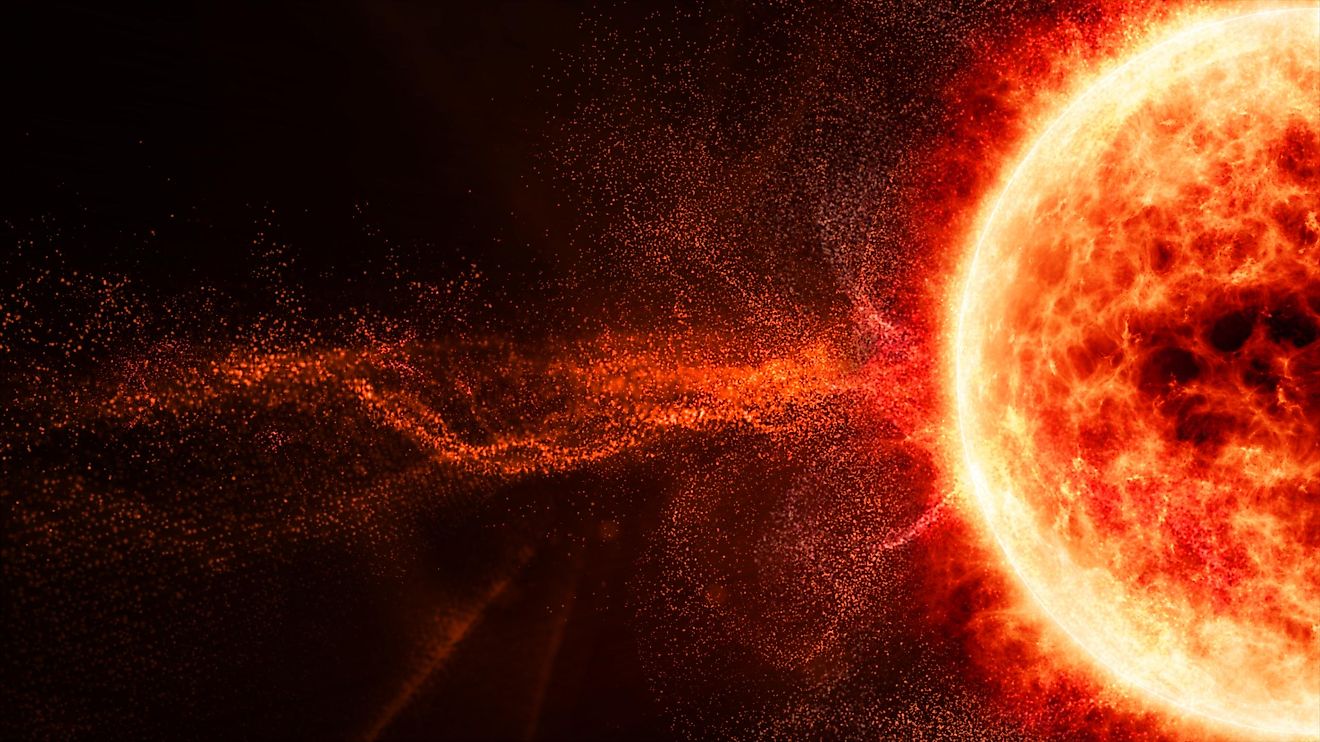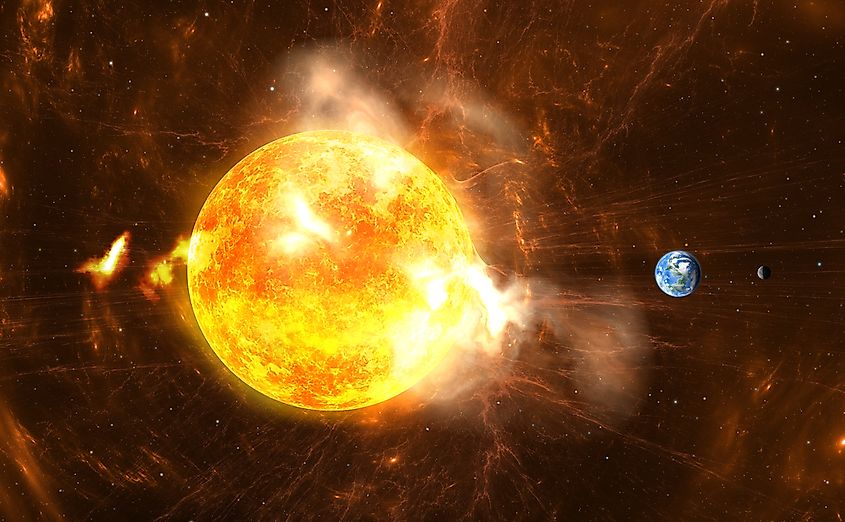What Is A Solar Wind?

- Solar winds can reach the speed of up to 800 km/s (1.79e+6 mph) due to an extremely high temperature of the Sun's corona which makes it defy gravity.
- Thermal collision causes the majority of the particles to travel at the speed of 145 km/h (324 356 mph), but when some reach the speed of 400 km/s (894 775mph) it is then that the solar winds are created.
- During the solar winds the Sun looses some of its mass, but in order to lose the mass of a single Earth it would take 150 light-years, due to the Sun's size.
Solar winds are strong air currents blowing from the Sun into space. This happens because of the corona, which is a layer of atmosphere found in all suns and stars. The temperature of Sun’s corona is too high for gravity to keep it down, and it causes solar winds that can reach the speed of 800 km/s (1.79e+6 mph).
Solar winds always travel away from the Sun, and they are most commonly accompanied by heavy magnetic clouds. The speed of solar winds varies depending on the so-called coronal holes and streamers. If the solar wind is traveling across coronal holes, it can reach the speed of 800 km/s (1.79e+6 mph); while it goes over streamers, it slows down to 300 km/s (671081 mph). These speed variations happen all the time, and as the Sun rotates, it affects the Earth. More precisely, because of this rotation, the Earth’s magnetic field is under tension, which can lead to storms in our own magnetosphere.
How Do Solar Winds Get So Fast?
The aforementioned layer of Sun’s atmosphere, corona, heats up quite high. The temperature of the Sun’s corona goes up to 999726°C (1799538°F). That kind of heat comes as a consequence of the constant thermal collisions that happen on the Sun. The way that the particles behave in such a scenario is explained by the Maxwellian formula or Maxwellian distribution. During the thermal collisions, most of the particles travel with the speed of 145 km/s (324 356 mph). However, some of them have enough energy to go up to 400 km/s (894 775mph), which is then enough to create a solar wind.

Along with that process, even smaller particles like electrons can reach an even higher speed. The speed of the electrons that fly around because of thermal collisions reaches 618 km/s (1.382e+6 mph), which is the point of the so-called solar escape velocity. Those high-speeding electrons are actually responsible for creating an electric field that then keeps on traveling in every direction away from the Sun.
This kind of particle dissipation that causes solar winds happens on a massive scale. The Sun loses between 1.3 and 1.9 million tons in one second. However, the Sun is approximately 330,000 times bigger than Earth, so it would take 150 light-years for the Sun to lose the mass of one Earth. In relation, other stars have even powerful solar winds that cause them to lose a lot more of their mass, while our Sun loses around 0,01% of its total mass each year because of solar winds.
Solar Storms
Once in a while, the Sun showcases even more powerful bursts of energy. These are known as coronal mass ejections. These are actually solar storms that happen during the period of solar maximum, and their effect is much stronger than a typical solar wind. When these solar bursts approach our planet, they enter our magnetic field.

Because of their immense power and high levels of radiation, they cause magnetic reconnection. In that case, particles are charged, and they make their way towards the Earth’s magnetic poles. This process is better known as aurora borealis. We are lucky our planet has such a powerful magnetic field. When the radiation brought towards Earth with solar winds approaches our atmosphere, it is then redirected. Our magnetic shield weakens the force of the solar wind by stretching, so they can travel away from us.











